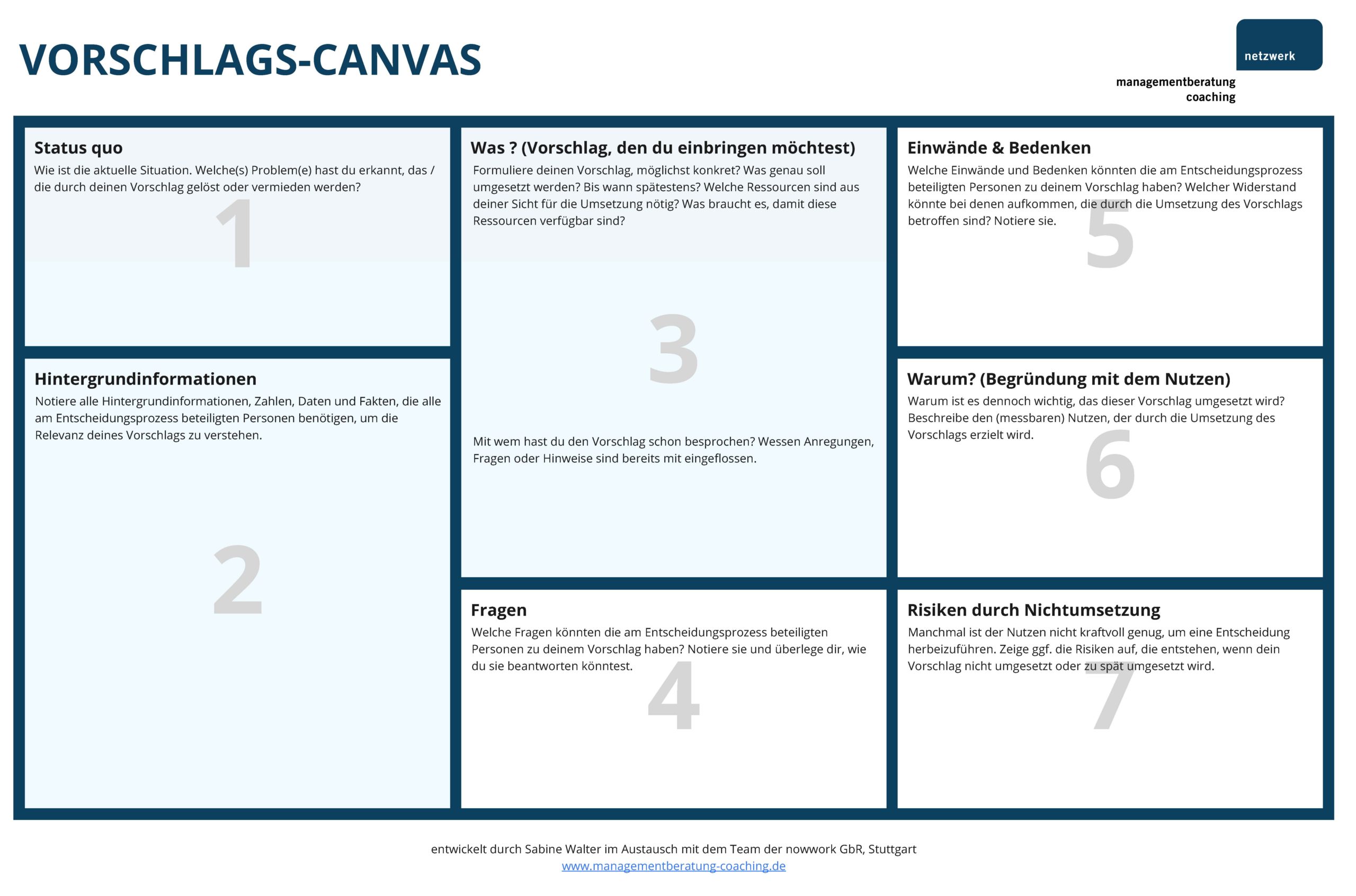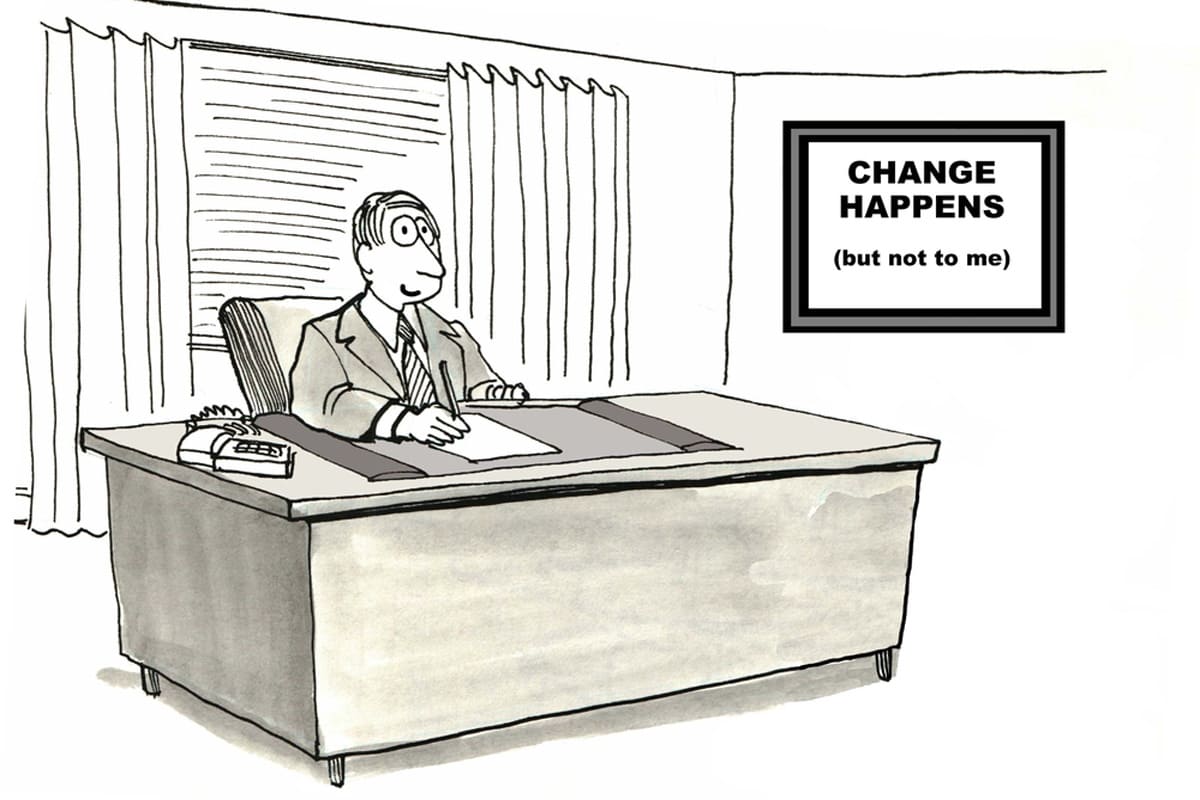Change Management | Continuous Improvement
Dealing with resistance in change processes
From Sabine Walter,, Head of netzwerk managementberatung | coaching
"We've always done it that way!" is probably the most common killer phrase when it comes to defending the familiar and hindering or stopping new ways, ideas, improvements; in short, change. In this article, I give seven courses of action to help minimise the number of killer phrases, i.e. the frequency of resistance. The eighth recommended action shows you how to rhetorically debunk killer phrases.
When we reach the module "Dealing with Resistance" in our various soft skill trainings, the phrases: "That won't work!" or "We've always done it that way!" are very present - after all, they clearly reflect what many who want to implement change in companies encounter: Resistance.
Resistance Change Management
Resistance in change processes is normal
Resistance in change processes is normal. Because changing behaviour, procedures, processes and approaches takes us out of our comfort zone. Security disappears. The fear of failure increases. Therefore, it is normal that people try to "defend" their security by first questioning or blocking the new.
If resistance is too great, it naturally hinders any form of further development and thus also undermines the competitiveness of companies in the long run. So what can you do concretely to minimise resistance in change processes?
Dealing with resistance in change processes: Recommendations for action
Dealing confidently with resistance in change processes
Below you will find my recommendations for action to help you minimise resistance in change processes, break down barriers to innovation, implement continuous improvement processes in companies and increase employee motivation.
Recommendation for action N°1: Place resistance in the overall context
As a first step, it helps if you place resistance to innovations in the overall (cultural) context of your company:
- What is the culture in your company? Do you have a Culture of trust or dominates the fear culture?
- If there is a Zero-defect thinking or a fault tolerance culture?
- Which Culture of change do you live in your company? How often are processes and structures changed? Are these changes understandable for everyone? How meaningful are these changes?
- How overloaded are the members of your organisation? How much time is left to really deal with new issues?
- How is the economic situation of the company? Is it doing well or are massive savings being made?
Recommendation N°2: Anticipate prevailing concerns and fears
Understanding the overall cultural context will help you anticipate what concern might be behind the phrase: "We've always done it that way".
- Is it the worry of making mistakes and not delivering perfect quality from day 1 of the new approach?
- What role does the fear of no longer being needed or losing influence at the end of the innovation play?
- Is it the worry of not having enough time to think through the new and implement it in peace?
- Could there be fundamental doubts about the usefulness of new ideas?
In order for us humans to go new ways and change behaviour, we need to change our leave our comfort zone. We do this especially when we feel emotionally safe. This feeling comes when we trust: on the one hand, in the person who introduces the new idea to us, and on the other hand, in the three W's - the what, why and how. And finally, in the end, we need to feel that we can cope with the new demands and need space and a trustworthy contact person to articulate their concerns and fears.
If you want to learn more about the role of trust in change processes, you can find impulses in the article "Change needs trust".
Recommendation for action N°3: Develop interpersonal trust through consistent relationship management
You all know the Iceberg. Applying this model to the levels at which we humans interact, the substantive level the rather subordinate part - also in professional life. The level that plays a central role is the relationship level.
The relationship level, i.e. the relationship you have with the colleagues who are the recipients of your new ideas or those affected by the changes, is always there. Either it is trusting or not, but it is never absent. Therefore, invest in these relationships, be honest and sincere and thus establish trust.
Recommendation N°4: Present proposals convincingly
This recommendation for action is also aimed at the basic human need for security. For, when we don't understand something, we feel insecure and usually don't get involved with the new. Therefore, Make sure that you formulate proposals and ideas in a way that is understandable and comprehensible to all.. Our proposal canvas is designed to help you structure your thoughts.

More impulses on communication in change processes can be found in our Newsletter Archive.
Recommendation for action N°5: Involve others in the development of new ideas
Experience shows that we humans are more likely to support ideas and proposals that we ourselves have helped to develop. Therefore, do not develop new ideas in the privacy of your own home, but rather take them on board. the role of the Idea moderator on. Formulate questionswhich need to be answered and assemble teams of expertsthat deal with these questions. Facilitate and document the process.
When formulating the questions, make sure that they are solution-focused and invite reflection. Here are some examples of solution-focused questions:
- How does it succeed us to shorten the production time by 1 day?
- How do we manageto reduce the scrap by 10%?
- What would we have to doto reduce material costs by 15% without sacrificing quality or causing suppliers to suffer from this cost reduction?
- How do we manage to reduce the return rate of item X by 30%?
- What must happenwith our fluctuation dropping below 5%?
Recommendation N°6: Present your own proposals to selected sparring partners or a sounding board.
This recommendation for action aims to use a multi-stage process when it comes to developing and implementing innovations. We have had very good experience in our work of inserting a sparring stage between the idea development stage and the publication and implementation stage.
This can be done situationally by taking your 80% proposal to a colleague, possibly a key opinion leader, and asking for their advice: "Tell me, what do you think of ...?". Listen, record, ask questions and integrate the impulses gained into your proposal.
In addition, there is also the possibility, institutionalise the process of sparring and introduce a sounding board in your organisation. What is meant by this? The Sounding Board is a body that either consists of defined members or is composed according to the situation. It has the task of,
- Listen to proposals,
- in a first step, to ask only comprehension questions, which are answered by the idea givers,
- in a second step, to express opinions, objections and concerns, as well as to propose appropriate solutions, so that the proposals can then be decided.
This active sparring usually increases not only the quality of suggestions but also the acceptance to implement these ideas.
Recommendation N°7: Anticipate objections
If you, in advance of the presentation of the proposals, have concerns and Anticipating the fears of those affectedYou can use these findings to make a presentation about the Anticipating objections in a targeted manner. Here are some examples:
- "Now you might ask, what's the point of doing it differently. (Objection) The benefit of the change, especially for your area, is ..." (Solution)
- "Now we often have the claim that everything has to run perfectly from minute 1. As this change offers a few special features, the changeover is to be made gradually in order to familiarise you with the new process as well.
- "Maybe now you're thinking, "Well, I'll be superfluous if we digitise all this."" The thought is obvious, but exactly the opposite is the case. Your role ...."
Recommendation for action N°8: Pick up the killer phrase and rhetorically rebut it
If you have already taken up the previous impulses and despite everything you hear the sentences: "That's not possible", or: "We've always done it that way", you will receive a communication structure below that will help you to deal with it in a confident and constructive way. This structure is a three-step process: Pick up - Classify - Move on. Specifically, this means:
YOU CAN'T!
Pick up
I perceive that you have doubts about the outlined procedure. / You doubt the feasibility / I hear that I have not yet been able to convince you completely. ...
Classify
I understand that / That is justified. / I'm sorry about that / I would like to understand your objection / the reasons for your doubts better.
Continue
do you think we would have to change the proposal to make it work? ... How else?
It is crucial that behind what you say there is an honest attitude of wanting to understand the other person. This open and approachable attitude will be reflected in your tone.
I wrote at the beginning of the article that resistance is normal in change processes. So you can react much more confidently even to this killer phrase if you assume before such conversations that you will receive resistance. Stay curious, explore the causes and make the interlocutor a co-thinker.
Let's look at the second example:
WE HAVE ALWAYS DONE IT THAT WAY!
Pick up
You say the current process has worked well. / You appreciate the current process. / You are satisfied with the way things are currently going.
Classify
That's good. / I understand that. / That surprises me. / I'd like to understand that in detail.
Continue
What exactly has proven successful? ... What else? (Try to get detailed information).
Interesting.
I noticed during this process that ... (now you are addressing the problem). How do you see it?
Let us assume if we had the chance to change this little thing now, how would we have to go about it so that the process works just as well afterwards?
The last question is a hypothetical question. Hypothetical questions reduce cognitive and emotional hurdles. They have proven effective in dealing with resistance.
Again, conduct the conversation with genuine interest and an approachable attitude. Only then will the interlocutor feel taken seriously and show a willingness to get involved.
Conclusion: Dealing confidently with resistance in change processes
Resistance in change processes is normal
In summary, resistance is a normal part of change. Acknowledge that. Resistance always arises when basic human needs have been violated or are in danger. All recommendations for action take into account the preservation of basic needs and thus help you to deal with and minimise resistance appropriately.
The recommendations for action are:
- Put the resistance into the overall context.
- Anticipate prevailing concerns and fears.
- Cultivate trusting relationships.
- Present your proposals convincingly.
- Involve others in developing proposals and ideas.
- Present your own proposals to selected sparring partners or a sounding board.
- Debunk killer phrases with the rhetorical three-step "pick up - classify - carry on".
If all these recommendations for action do not lead to new things being received much more openly and constructively by your environment, it is advisable to take a detailed look at the Corporate and leadership culture of your organisation and to develop them further. We would be happy to support you in this.



